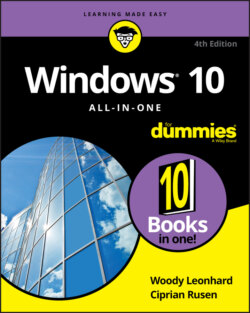Читать книгу Windows 10 All-in-One For Dummies - Ciprian Adrian Rusen, Woody Leonhard - Страница 45
HOW DID WE GET INTO THIS NICE MESS
ОглавлениеMicrosoft’s been making tablet software for more than a decade, and it never put a dent in the market. Never did get it. Apple started selling tablet software in 2010 and selling tons of it. Boy howdy. Now Microsoft’s diving in to get a piece of the touch-enabled action.
There's a big difference in approaches. Apple started with a phone operating system, iOS, and grew it to become the world’s best-selling tablet operating system. There’s very little difference between iOS 14 on an iPhone and iPadOS 14 on an iPad: Applications written for one device usually work on the other, with a few obvious changes, such as screen size. On the other hand, Apple’s computer operating system, macOS, is completely different. It’s built and optimized for use with a Mac computer. Apple is slowly changing the apps on both iOS and macOS, so they resemble each other and work together. But the operating systems are fundamentally quite different (even though, yes, iOS did originally start with the Mac OS Darwin foundation).
When Windows 7 was finished, Steve Sinofsky and crew decided to take a fundamentally different tack. Instead of the good people at Microsoft growing their phone software up, they decided to grow their computer operating system down. (The fact that the phone software at that point drew nearly universal scorn could’ve been part of the reason.) Windows 8 grew out of that decision: There’s a touch-friendly part and a mouse-and keyboard-friendly part. The two aren’t mutually exclusive: You can use your mouse on the Metro Start screen, and in the Windows 10 apps, you can use your greasy thumb on an old-fashioned desktop app. But the approach is different, the design is different, and the intent is different.
Windows 10 goes back to Windows Start menu roots and tries to grow the same concept down even further, to Windows Phone. Microsoft will be able to say that Windows covers all the bases, from lowly smartphones to gigantic workstations (and server farms, for that matter). The fact that the “Windows” running in each of the device classes is quite different kinda gets swept under the rug.
FIGURE 2-3: The Windows 10 Weather app is a former UWP app because it’s based on the WinRT API. See the distinctive design?
Unfortunately, there’s a huge difference between Windows 10 apps and desktop apps. For starters:
Universal Windows apps — the ones that run on the WinRT API — are on the way out. Microsoft rebuilt the aging Windows Desktop app Internet Explorer and turned it into the Universal Windows app called Microsoft Edge. Internet Explorer has been gradually marginalized, and now it's dead in a corner. After many years of trying to promote UWP apps, Microsoft has decided that it would stop. Instead, they opened up more and more UWP functionality to non-UWP platforms, including legacy platforms that Microsoft once deprecated, such as Win32, WPF, and WinForms. So what’s old is new again.
Desktop apps and Universal Windows apps are starting to look the same. Developers want you to look at their programs and think, “Oh, hey, this is a snappy new version.” Also, Microsoft is intertwining the features available in both app platforms, making things blurrier than ever.
Universal Windows apps really are better. Don’t shoot me. I’m just the messenger. Now that we can run those newfangled tiled Universal Metro whoozamajiggers in their own resizable windows on the Windows desktop, the underlying new WinRT plumbing beats the pants off Win32. WinRT apps don’t bump into each other as much, they (generally) play nice in their own sandboxes, they won’t take Windows down with them, and they don’t have all the overhead of those buggy Win32 calls.
If you’re going to stay with Windows, it’s time to get with the system and learn about this new tiled stuff.
Here’s a quick guide to what’s new — and what’s still the same — with some down-and-dirty help for deciding whether you truly need Windows 10.
